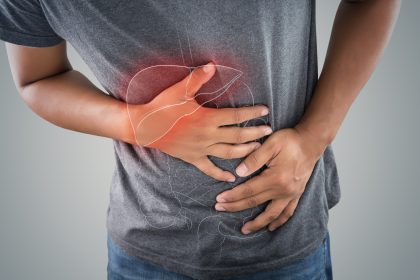Esophageal cancer represents one of the most challenging and often overlooked digestive system malignancies, developing in the tube that connects your throat to your stomach. This aggressive disease claims thousands of lives annually, yet remains unfamiliar to many people despite its serious nature and increasing prevalence in certain populations.
How esophageal cancer develops in your body
The esophagus serves as the conduit for food and liquid traveling from your mouth to your stomach. This muscular tube, approximately 10 inches long in adults, can develop cancerous changes in its lining that gradually progress from normal cells to precancerous conditions before evolving into invasive cancer.
Two primary types of esophageal cancer exist, each with distinct risk factors and affected populations. Squamous cell carcinoma primarily affects the upper and middle portions of the esophagus and has historically been the most common form worldwide. Adenocarcinoma, which develops in the lower esophagus near the stomach connection, has become increasingly prevalent in Western countries over recent decades.
The transformation from healthy tissue to cancer typically occurs gradually over many years. The process often begins with chronic irritation or inflammation of the esophageal lining, frequently caused by repeated exposure to irritants such as stomach acid, alcohol, tobacco, or extremely hot beverages. This persistent irritation triggers cellular changes that can eventually lead to uncontrolled cell growth and cancer development.
For adenocarcinoma specifically, a condition called Barrett’s esophagus often precedes cancer development. This condition occurs when stomach acid repeatedly damages the lower esophageal lining, causing the normal squamous cells to be replaced by intestinal-type cells better suited to withstand acid exposure. While Barrett’s esophagus itself is not cancer, it significantly increases the risk of developing adenocarcinoma over time.
Warning signs you should never ignore
Esophageal cancer often develops silently, with noticeable symptoms appearing only after the disease has advanced. This delayed symptom onset contributes significantly to the disease’s poor overall survival rates. Recognizing potential warning signs can lead to earlier detection and more effective treatment.
Difficulty swallowing, medically termed dysphagia, represents the most common symptom of esophageal cancer. This typically begins with occasional trouble swallowing solid foods, particularly meats, breads, or raw vegetables. As the disease progresses, swallowing difficulties extend to softer foods and eventually even liquids. Many patients describe the sensation as food “sticking” in their chest or throat.
Unexplained weight loss often accompanies esophageal cancer due to reduced food intake from swallowing difficulties and increased metabolic demands from the growing tumor. Weight loss exceeding 5% of body weight over six months without intentional dieting warrants medical evaluation.
Persistent chest pain, pressure, or burning unrelated to eating may indicate esophageal cancer. This discomfort sometimes resembles heartburn but typically does not respond to antacid medications. The pain may radiate to the back, between the shoulder blades, or up toward the jaw.
Chronic cough or hoarseness that persists for more than two weeks without other explanations such as respiratory infection may signal esophageal cancer, particularly tumors in the upper esophagus. These symptoms result from the tumor irritating surrounding structures or from aspiration of food or liquids into the airways due to swallowing difficulties.
Food regurgitation occurs in many esophageal cancer patients. Unlike vomiting, this regurgitation happens without nausea or retching, as undigested food returns to the mouth when it cannot pass through the narrowed esophagus. This symptom often worsens as the disease progresses and the esophageal passage narrows further.
Risk factors that increase your chances
Several established risk factors significantly increase the likelihood of developing esophageal cancer, with some factors more strongly associated with specific cancer types. Understanding these risks can help identify individuals who might benefit from closer monitoring.
Age plays a substantial role in esophageal cancer risk, with incidence rates rising sharply after age 50. Men develop this cancer approximately three to four times more frequently than women, though the reasons for this gender disparity remain incompletely understood.
Tobacco use in any form dramatically increases esophageal cancer risk, particularly for squamous cell carcinoma. Cigarette smoking multiplies risk by 2-4 times compared to non-smokers, with the risk rising in proportion to both intensity and duration of smoking. Even smokeless tobacco products significantly increase risk due to direct contact with the esophageal lining.
Alcohol consumption, especially heavy or regular drinking, strongly correlates with increased esophageal cancer risk. When combined with tobacco use, alcohol creates a synergistic effect, multiplying cancer risk beyond the sum of each factor individually. This combination particularly impacts squamous cell carcinoma development.
Chronic acid reflux, medically known as gastroesophageal reflux disease (GERD), significantly raises adenocarcinoma risk through repeated acid exposure to the lower esophagus. Approximately 10-15% of chronic GERD patients develop Barrett’s esophagus, which itself carries a 0.5-1% annual risk of progressing to adenocarcinoma.
Obesity contributes substantially to esophageal adenocarcinoma risk through multiple mechanisms, including increased abdominal pressure that worsens acid reflux and hormonal changes that promote cellular growth. The rising obesity rates in Western countries partially explain the increasing adenocarcinoma incidence observed over recent decades.
Dietary factors influence esophageal cancer risk, with diets low in fruits and vegetables associated with higher cancer rates. Consuming very hot beverages regularly has been linked to increased risk, particularly in certain geographic regions where drinking scalding tea or other liquids constitutes a cultural practice. Studies suggest that repeatedly burning the esophageal lining creates inflammation that promotes cancerous changes over time.
Early detection that saves lives
Given esophageal cancer’s typically silent progression until advanced stages, screening and early detection efforts focus primarily on identifying individuals at elevated risk rather than screening the general population. This targeted approach aims to detect precancerous conditions or early-stage cancers when treatment outcomes remain more favorable.
Endoscopy provides the gold standard for esophageal examination, allowing direct visualization of the esophageal lining using a flexible tube with a light and camera. During this procedure, physicians can identify suspicious areas and collect tissue samples for microscopic examination. For high-risk individuals, particularly those with long-standing GERD or Barrett’s esophagus, regular endoscopic surveillance represents the most effective detection strategy.
Newer screening technologies continue emerging to improve early detection capabilities. Cytosponge, sometimes called the “sponge on a string,” offers a less invasive alternative to traditional endoscopy for Barrett’s esophagus screening. This device consists of a compressed sponge within a capsule attached to a string, which expands when the capsule dissolves in the stomach and collects cells for analysis when withdrawn.
Molecular biomarkers detectable in blood samples show promise for identifying patients with early esophageal cancer or precancerous conditions. While not yet widely implemented in clinical practice, these blood-based tests could eventually provide less invasive screening options, particularly for individuals with multiple risk factors.
For those diagnosed with Barrett’s esophagus, regular surveillance remains crucial. Current guidelines typically recommend endoscopy every 3-5 years for those without dysplasia (abnormal cell growth), with more frequent examinations for those showing low or high-grade dysplasia. This vigilant monitoring helps detect progression toward cancer at its earliest, most treatable stages.
Treatment approaches that offer hope
Treatment strategies for esophageal cancer depend primarily on the disease stage, tumor location, patient’s overall health, and specific cancer type. Multi-disciplinary teams including gastroenterologists, oncologists, surgeons, radiation specialists, and nutritionists typically collaborate to develop comprehensive treatment plans.
Surgical intervention remains the cornerstone of treatment for localized esophageal cancer. Esophagectomy, the surgical removal of part or all of the esophagus along with nearby lymph nodes, offers the best chance for cure in early-stage disease. During this procedure, surgeons reconstruct the digestive tract by pulling up the stomach or using a portion of the colon to replace the removed esophageal section.
Chemotherapy and radiation therapy, often combined as chemoradiation, play vital roles in esophageal cancer treatment. These approaches may serve as the primary treatment for patients unable to undergo surgery or as additional therapy before or after surgery to improve outcomes. Neoadjuvant therapy (treatment before surgery) helps shrink tumors to facilitate complete surgical removal, while adjuvant therapy (treatment after surgery) aims to eliminate any remaining cancer cells.
Targeted therapies designed to attack specific cancer cell vulnerabilities have emerged as important treatment options for certain patients. For instance, trastuzumab targets HER2, a protein overexpressed in approximately 20% of esophageal adenocarcinomas. Patients with tumors showing HER2 overexpression may benefit significantly from adding this targeted agent to standard chemotherapy.
Immunotherapy represents one of the most promising recent advances in esophageal cancer treatment. These medications help the body’s immune system recognize and attack cancer cells more effectively. Several immunotherapy drugs have demonstrated impressive results in clinical trials, particularly for patients with advanced disease who have progressed after initial treatment.
Endoscopic treatments offer less invasive options for very early-stage cancers or precancerous conditions like Barrett’s esophagus with high-grade dysplasia. Techniques such as endoscopic mucosal resection allow removal of abnormal tissue without major surgery, while ablative therapies like radiofrequency ablation destroy precancerous tissue through controlled heat application.
Lifestyle changes that reduce your risk
While some esophageal cancer risk factors cannot be modified, several preventive strategies can significantly reduce risk through lifestyle adjustments and medical management of predisposing conditions.
Tobacco avoidance represents perhaps the single most effective preventive measure against esophageal cancer, particularly squamous cell carcinoma. Quitting smoking, regardless of current age or smoking duration, progressively reduces cancer risk, with benefits beginning almost immediately after cessation.
Moderating alcohol consumption significantly decreases esophageal cancer risk. Guidelines suggest limiting intake to no more than one drink daily for women and two for men, with greater risk reduction achieved through further limitation or abstinence.
Managing acid reflux effectively through lifestyle modifications and medication when necessary helps prevent chronic esophageal damage that predisposes to Barrett’s esophagus and adenocarcinoma. Simple measures like elevating the head during sleep, avoiding late meals, maintaining healthy weight, and eliminating trigger foods can substantially reduce reflux symptoms and esophageal exposure to stomach acid.
Dietary improvements play an important role in risk reduction. Consuming more fruits and vegetables provides protective antioxidants and other beneficial compounds that may help prevent cancerous changes. Reducing consumption of processed meats, very hot beverages or foods, and heavily charred items further decreases potential carcinogen exposure.
Weight management significantly impacts esophageal adenocarcinoma risk, with obesity strongly linked to increased incidence. Even modest weight loss can reduce reflux symptoms and improve overall esophageal health in overweight individuals.
Regular medical care ensures appropriate management of conditions that increase esophageal cancer risk. Patients with chronic GERD, especially those with additional risk factors, should discuss appropriate monitoring strategies with their healthcare providers rather than simply managing symptoms independently with over-the-counter medications.
By understanding esophageal cancer’s warning signs, risk factors, and preventive strategies, individuals can take proactive steps toward earlier detection and risk reduction. While this cancer remains challenging, advances in screening, diagnosis, and treatment continue improving outcomes for patients facing this serious disease.


















